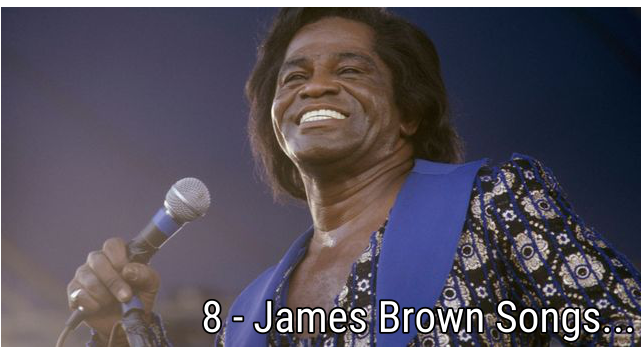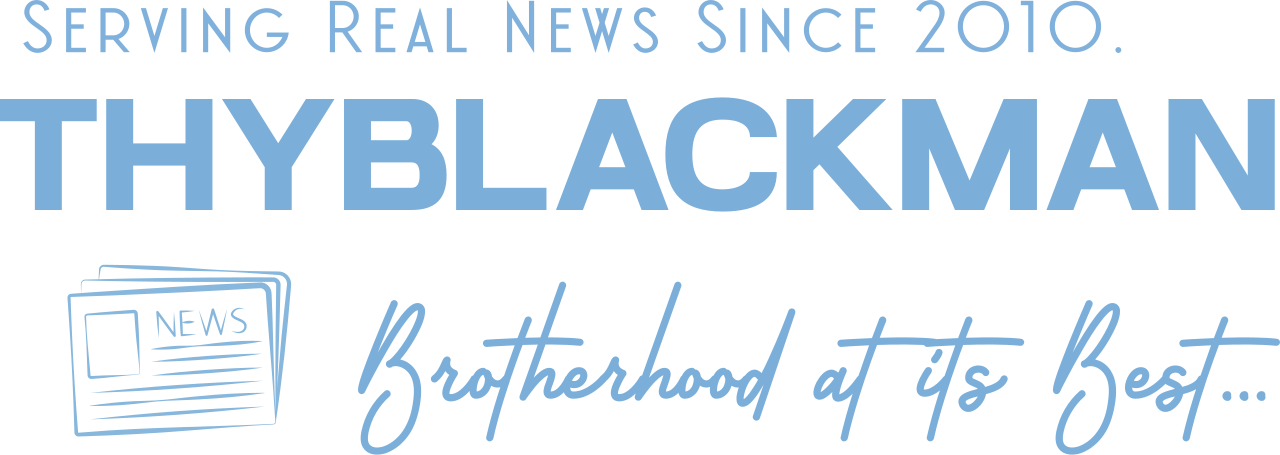(ThyBlackMan.com) When I first wrote about James Brown, I thought I’d covered enough ground with the big hits—the songs everyone knows and loves. But not long after that article went live, I started hearing from readers who wanted more. “You forgot The Boss!” “What about Santa Claus Go Straight to the Ghetto?” The messages kept coming. And honestly, they were right—there’s so much more to James Brown than just the classics.
So I’m back, and this time, I’m diving deeper into the grooves that don’t always make the greatest hits playlists but deserve just as much attention. These songs show James Brown’s full range—his power as a performer, yes, but also his depth as a storyteller, a thinker, and a man who understood the world around him. Some are funky, some are emotional, and a few might surprise you with how relevant they still feel today.
If you loved the first article, this one’s for you. And if this is your first time exploring the deeper cuts—get ready. James Brown had layers, and the funk never stops.

1. “There Was a Time”
This track, originally a B-side to “I Can’t Stand Myself (When You Touch Me),” stands out as one of Brown’s most rhythmically sophisticated and emotionally dynamic pieces. “There Was a Time” begins slow and builds into a funk explosion, driven by Brown’s percussive vocal delivery and the Famous Flames’ tight instrumental backing. What makes it exceptional is the way Brown orchestrates the band like a conductor with a whip—every shout, every cue changes the direction of the music.
Lyrically, it’s simple and even nostalgic, but the emotion comes through the performance. There is a yearning in Brown’s voice, reflecting on a time when love, youth, and perhaps respect were more abundant. The song becomes less about the words and more about the groove, the moment-to-moment electricity that only Brown could conjure on a live stage. Brown had an innate sense of pacing, knowing when to shout, when to let the horns breathe, and when to let the drums lead. That choreography between vocals and instruments makes this more than just a song—it’s a funk opera in miniature.
What elevates “There Was a Time” even further is its live renditions. During performances at the Apollo Theater and in Europe, Brown would stretch the song into extended funk meditations, interacting with the crowd, dancing, and essentially using the stage as an instrument. In those moments, the song becomes performance art, not just music. It’s deeply participatory, a call to the people to not just remember the good times, but to relive them.
Today, this track feels like a blueprint for modern funk and jam bands. Artists like D’Angelo and Anderson .Paak owe a heavy debt to the precise looseness that this song mastered. Whether it’s played in a vinyl listening session or streamed through modern headphones, “There Was a Time” still moves the soul and the feet. It’s a slow-motion funk masterpiece that grows more powerful the longer you let it play.
2. “Ain’t That a Groove”
“Ain’t That a Groove” is James Brown at his smoothest and most charming. Backed by The Jewels on vocals and anchored by a light, bouncing rhythm section, this song straddles the line between soul and doo-wop. It showcases a different side of Brown—more melodic, less aggressive, but still unmistakably in control. The energy here is infectious in a quieter, more romantic way, showing that Brown could seduce just as well as he could dominate.
Brown’s phrasing here is buttery and full of sly charisma. The lyrics are about finding that perfect synergy with a lover, and Brown’s delivery makes it feel personal, as though he’s winking at the listener through the speakers. The interplay between the backing vocals and his lead lines creates a lush soundscape, one where harmony and groove walk hand-in-hand. It’s less about the funk breakdowns and more about musical chemistry, which makes it a great entry point for listeners who might not be ready for the full-throttle Brown experience.
What makes “Ain’t That a Groove” so enduring is its sense of cool. There’s no urgency in the tempo, no pressure to push or pull the beat. It glides, effortlessly. This makes it incredibly relevant today in an era where many R&B artists lean into retro production. Musicians like Leon Bridges, H.E.R., and Anderson .Paak all draw on this kind of sonic sophistication—retro without being stale, emotionally open without being overdone.
Sonically, this song holds up incredibly well today. The production is clean, the instrumentation crisp, and the vocal layering still impresses. Modern R&B singers like BJ the Chicago Kid echo this kind of vintage cool. “Ain’t That a Groove” proves that Brown wasn’t just the hardest working man in showbiz—he was also a romantic at heart. It’s the kind of song that fits perfectly into a vinyl date night or a smooth Sunday playlist.
3. “Let Yourself Go”
With “Let Yourself Go,” James Brown invites listeners into a hypnotic, slow-burning groove. This song is notable for its atmospheric arrangement and gradual intensification. The track simmers instead of explodes, providing a perfect platform for Brown’s emotive vocals and subtle improvisation. Where many funk songs aim to hit you hard out the gate, this one sneaks up on you—soft at first, then impossible to ignore.
What’s fascinating is how the song maintains suspense, teetering on the edge of eruption but never fully giving in. This tension gives the song a sophisticated sense of drama that mirrors the internal struggle of self-expression and restraint. Brown commands the groove with finesse, holding back just enough to keep listeners hooked. The dynamic range of his voice is on full display here—soft and contemplative in one moment, fiery and insistent in the next.
The instrumentation is tight but understated, built around a circular bassline, soft brushes of guitar, and gently weeping horns. Each player contributes just enough, never overwhelming the vocal narrative but enriching it. The result is something that feels like soul-jazz with a funk undercurrent—a genre-bending track that was ahead of its time. The song becomes a kind of guided release, a musical therapy session wrapped in rhythm and velvet tones.
Today, “Let Yourself Go” feels like a meditation as much as a funk track. Its themes of emotional release and vulnerability resonate deeply in an era increasingly defined by mental wellness and authenticity. It’s music for anyone trying to shake off expectations and reconnect with their own rhythm. This track is a soft storm—elegant, introspective, and still every bit as powerful more than fifty years later. If you’re looking to understand the emotional depth behind James Brown’s stage persona, this is the track to study.
4. “World”
One of James Brown’s most underrated compositions, “World” reflects his growing awareness of global issues and inner-city strife during the late ’60s. Musically, it’s expansive and jazzy, with complex chord changes and a melodic structure that deviates from Brown’s more rhythm-driven work. The song’s unusual structure and instrumental arrangements suggest a shift in Brown’s perspective, moving from dancefloor-fueled funk to something closer to soul jazz or even protest balladry.
Lyrically, the song addresses environmental degradation and the consequences of war, making it remarkably prescient. Brown sings, “World, it’s not a place to live in,” a sentiment that could just as easily describe the chaos of our modern climate crisis or political unrest. It’s a surprisingly poetic moment from an artist more often associated with punchy, declarative anthems. The vulnerability in his voice is striking, giving listeners a window into his spiritual and social concern.
This track remains relevant for socially conscious listeners and musicians who see art as a tool for change. The arrangement—lush strings, haunting horns, and layered vocals—gives “World” a cinematic quality. Brown was channeling the spirit of Marvin Gaye and Curtis Mayfield here, using music as a mirror to society. It’s not your typical James Brown track, which is exactly why it demands attention and rewards repeated listens.
In a contemporary context, “World” would sit comfortably on a playlist next to Marvin Gaye’s What’s Going On, Stevie Wonder’s Village Ghetto Land, or even Kendrick Lamar’s more introspective work. It’s a sobering reminder that funk, at its best, doesn’t shy away from pain or injustice—it grooves through it. “World” shows James Brown as a thinker, a prophet, and a man whose sense of responsibility extended far beyond the stage.
5. “Down and Out in New York City”
This song, featured on the soundtrack for the film Black Caesar, is a jazz-funk epic that marries streetwise storytelling with intricate orchestration. The cinematic string intro alone distinguishes it from Brown’s more minimal funk arrangements, setting the tone for a tale of survival and transformation in the urban jungle. It feels more like a scene from a Blaxploitation film than a traditional Brown tune—because it is—and yet it holds up as one of his most musically sophisticated moments.
“Down and Out in New York City” captures the hustle and pain of striving for success in a brutal environment. Brown’s vocals here are more restrained, almost contemplative, adding gravity to the narrative. He chronicles the rise from street-level struggle to hard-earned power, not through bragging, but through emotional nuance and carefully chosen phrasing. It’s a character study as much as a funk tune, and the arrangement—with its horns, strings, and rhythm section—provides a lush backdrop to match.
In many ways, this track laid groundwork for future genres like neo-soul and cinematic soul, where narrative depth and orchestral embellishment are key. Brown uses the studio as a canvas here, painting a portrait of grit, resilience, and earned pride. Artists like Raphael Saadiq, Solange, and Bilal echo the balance of instrumentation and message found in this song, showing how enduring this blueprint remains.
This is one of those songs that reveals more with each listen. Its blend of grit and grandeur ensures it remains not just listenable, but essential in understanding the full scope of Brown’s artistry. In today’s world—where economic inequality, survivalism, and ambition still shape city life—this song could easily soundtrack a modern film or docuseries. It’s one of Brown’s finest storytelling triumphs.
6. “The Boss”
Another track from the Black Caesar soundtrack, “The Boss” is pure swagger, with a driving rhythm and searing brass section that commands attention from the first note. Brown’s vocals are assertive and charged with purpose—he’s not just telling us he’s the boss; he’s proving it in real-time. There’s an edge to his performance, a battle-worn confidence that speaks to hard-earned power. This is Brown in full command—not only of his music, but of his identity.
What makes “The Boss” so captivating is its attitude. The groove is aggressive and sleek, the kind of track that demands movement. The horns don’t just punctuate—they slice. The drums don’t just keep time—they march. Lyrically, it reflects themes of redemption and self-empowerment, making it deeply resonant for anyone who has faced adversity and come out stronger. Brown isn’t bragging—he’s reclaiming.
The production is top-tier. Horn stabs, wah-wah guitars, and tight drum fills create an atmosphere of triumph and grit. The track has been sampled by numerous hip-hop artists, most famously by Ice-T in You Played Yourself and Nas in Get Down, which has given the song a second life in urban music culture. It’s become synonymous with a kind of street-born confidence, a soundtrack to resilience and reinvention.
To this day, “The Boss” is a motivational anthem. Whether you’re heading into a meeting, a workout, or just trying to reclaim your confidence, this track is your sonic armor. It affirms Brown’s role not just as a performer, but as a cultural force. In a society that often overlooks the backstory behind success, “The Boss” gives voice to the struggle and pride behind the crown.
7. “Santa Claus Go Straight to the Ghetto”
Yes, it’s a holiday song, but it’s also one of the most poignant expressions of James Brown’s commitment to his community. “Santa Claus Go Straight to the Ghetto” is a plea, a prayer, and a celebration all rolled into one. Far from being just festive filler, it underscores Brown’s understanding of systemic inequality, even during supposed times of joy. Where most Christmas songs lean on fantasy or sentiment, Brown anchors his in social realism.
Brown infuses this song with deep soul and genuine compassion. It’s as funky as it is heartfelt, with horns, bass, and backup vocals working together to give the track a sense of urgency and warmth. His vocals strike a delicate balance—playful enough to charm children, serious enough to challenge adults. He’s not just singing for presents; he’s singing for visibility, dignity, and equity.
Modern listeners will appreciate the song’s sincerity and relevance. In an age where wealth gaps are more visible than ever, “Santa Claus Go Straight to the Ghetto” feels more like a social statement than a carol. It offers a powerful reminder that even during the holidays, inequality persists. Brown wasn’t asking for sympathy—he was demanding attention to those forgotten in public celebration.
This song is a must-add to any holiday playlist with a conscience. It brings groove, message, and soul—all trademarks of Brown’s most meaningful work. It reminds us that funk was never just about dancing; it was about truth-telling too. And in this case, it’s truth-telling wrapped in jingle bells and soul.
8. “Mind Power”
“Mind Power” is a deep cut from Brown’s The Payback album, often overshadowed by the title track but equally deserving of attention. The song is a testament to Brown’s belief in self-determination and mental strength, wrapped in a slinky, hypnotic groove that showcases his band’s precision. It’s a sonic mantra, daring you to rise above chaos by tuning into your own inner strength.
Lyrically, it’s empowering. Brown emphasizes the importance of intellect, awareness, and self-control. “You’ve got to use what you got / To get just what you want,” he chants—a line that could double as a life philosophy or a productivity mantra. It’s funk with a message, designed to uplift and enlighten. The repetition isn’t lazy; it’s intentional. It drills the message home while locking listeners into a groove-induced trance.
The arrangement is a masterclass in groove layering. The rhythm section keeps it tight, while the horns add just enough flair to elevate the message without overshadowing it. The guitar work is especially important here—sharp, rhythmic, and restrained. Brown’s delivery is passionate but measured, making every word count. He speaks with the authority of a preacher and the flow of a jazz musician.
In today’s world of information overload and constant distraction, “Mind Power” feels more urgent than ever. It’s a reminder that our greatest asset is our mind—and that funk can be both a vibe and a vehicle for growth. For those seeking music that empowers as much as it entertains, this track stands tall. Brown didn’t just want you to move—he wanted you to think. And that, perhaps, is the funkiest idea of all.
Putting this second James Brown article together has reminded me just how much ground there is to cover when talking about someone as iconic—and complex—as the Godfather of Soul. The tracks in this list aren’t just great songs—they’re windows into different parts of Brown’s personality: the activist, the romantic, the streetwise survivor, and the master of his craft.
What makes it even more special is knowing that so many of you wanted this. Your messages, your song requests—they’re what brought this follow-up to life. And it’s proof that James Brown isn’t just music history—he’s still part of the cultural conversation. Still inspiring. Still teaching.
If you walked away from this piece with a new favorite song or a deeper appreciation for James Brown’s legacy, then it did its job. And if you’re still thinking, “But wait, you forgot another one!”—don’t worry. We might just have to do this again.
Staff Writer; Jamar Jackson
















Leave a Reply